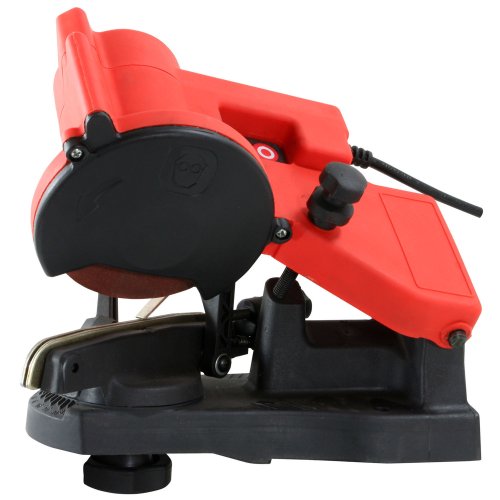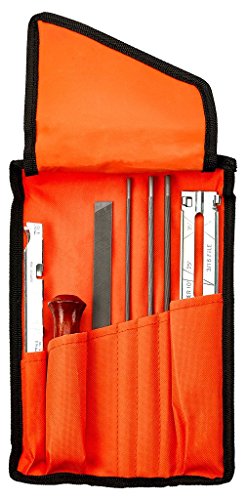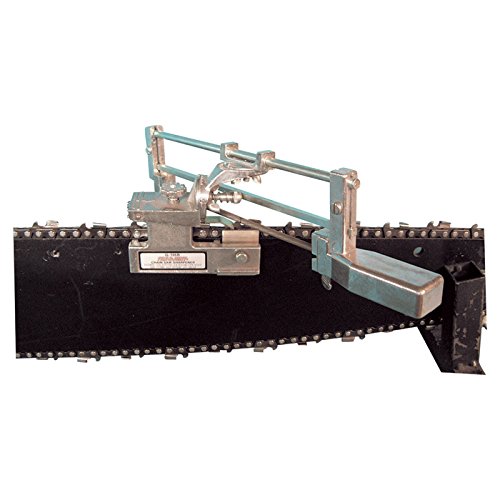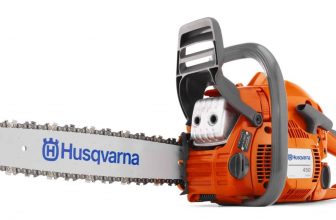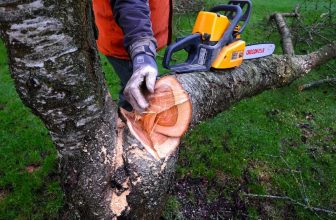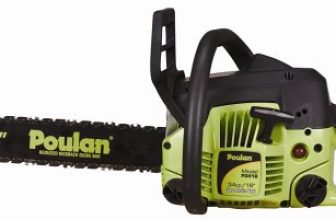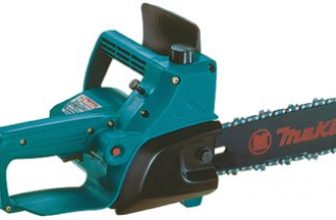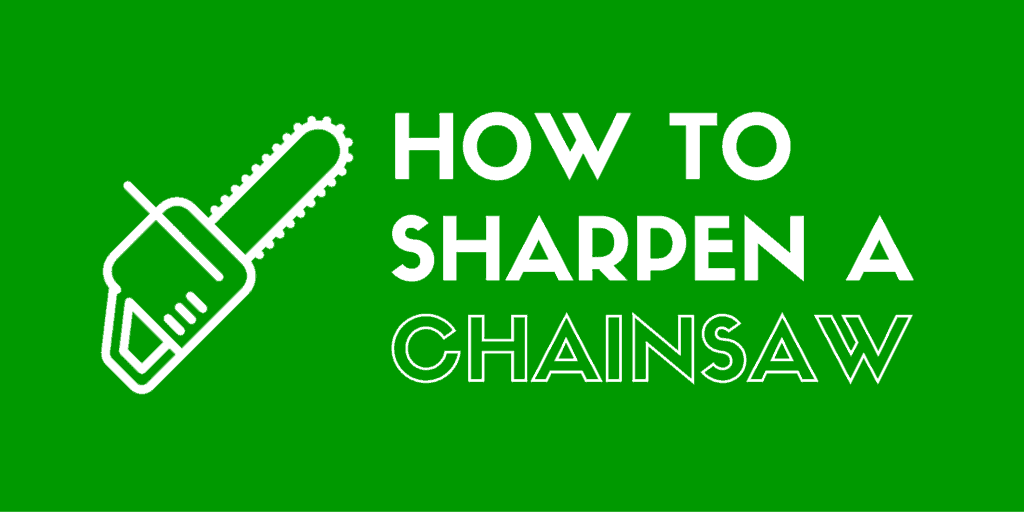
This post may contain affiliate links. This small commission costs you nothing and allows us to write more great power tool reviews for you.
Sharpening Your Chainsaw Chain
Whether you run an established landscaping company, or you’ve decided to take on responsibility for your yard work needs yourself as an act of courage – maintaining your set of tools is crucial. Dull clippers can’t trim branches and an unsharpened chainsaw can be as equally as frustrating to use for your bigger tree trimming needs. Even if you’ve been slacking on your property maintenance work and your chainsaw has been sitting in your shed, the blade will naturally dull over time, according to Husqvarna, so knowing how to sharpen a chainsaw is a good technical skill to have. Unless you were raised by a family of hearty lumberjacks, you probably won’t know how to sharpen your own chain, and that’s exactly what we’ll teach you how to do below.
Don’t forget to check out our chainsaw reviews on popular models like the Husqvarna 450
Sizing Up Your Chainsaw Chain
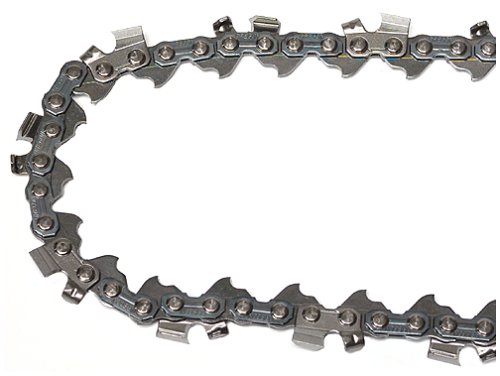 There are different sizes and types of ‘teeth’ on your saw for a reason, and knowing which you need is the first step. The two basic types of teeth are either round or square, and other than being suitable for different types of cutting, they do affect how you would go about sharpening the blade once it becomes dull. The two options are either using a rotary grindstone or suitable chainsaw file. If this sounds confusing, don’t worry – you’ll basically be using an industrial grade file to individually sharpen each of the ‘teeth’.
There are different sizes and types of ‘teeth’ on your saw for a reason, and knowing which you need is the first step. The two basic types of teeth are either round or square, and other than being suitable for different types of cutting, they do affect how you would go about sharpening the blade once it becomes dull. The two options are either using a rotary grindstone or suitable chainsaw file. If this sounds confusing, don’t worry – you’ll basically be using an industrial grade file to individually sharpen each of the ‘teeth’.
Chain saw manufacturers have begun making this process even more seamless. For example, Stihl
The type of file you choose should match the size of the notches on your chainsaw’s teeth. Visiting your local hardware store, you’ll likely see them sized according to diameter and measured in fractions of an inch. You’ll likely see sizing like 3/16 or 7/32. If this all seems foreign to you, simply consult your user’s manual, it will almost certainly have the correct teeth measurements so you can find the right file.
Preparing Your Chainsaw for Sharpening
Alright, so you’ve got your chainsaw on the bench, you’ve got the correct size file and you’re ready to get this thing working again so it actually cuts through your trees or branches.
Before you get started though, make the whole process easier on yourself and remove any saw dust, dirt, and other organic debris from the chain and teeth. If you’ve been cutting cedar or maple at all, there may be a buildup of sap residue. Wipe the whole unit down and carefully examine the chain itself for stickiness.
Before you get started though, make the whole process easier on yourself and remove any saw dust, dirt, and other organic debris from the chain and teeth. If you’ve been cutting cedar or maple at all, there may be a buildup of sap residue. Wipe the whole unit down and carefully examine the chain itself for stickiness.
Another aspect you will not want to overlook before getting started sharpening your chainsaw is looking your unit over for damaged or worn down links or teeth. If you’ve been particularly rough with your chainsaw or haven’t maintained it regularly you may have loose links or chunks missing from the teeth. If this is the case you can easily purchase replacements either directly from your chainsaws manufacturer or your local hardware store. If there are any cracks in the actual chain or guide bar itself, it may be best to replace these or invest in a new unit.
To clarify, the links are the small rounded connections that keep your chain together and the teeth are the actual ‘notches’ that make contact with whatever you are cutting. Regular maintenance should include making sure both these aspects of your unit are structurally sound, not loose or damaged and anything that needs to be replaced individually is done before you start the sharpening process. Failure to do this can result in a chain breaking mid-use which is a very dangerous situation.
Choosing the Correct File Size
Manual chainsaw files are designed to make this sharpening process easy enough for even the novice landscaper to complete. Manufacturers like Stihl have even gone to the trouble of marking what size file is needed for the type of teeth on the actual unit itself.
The size of file you choose will also depend on the gauge and pitch of your saw. Don’t panic if these terms confuse you though, they are relatively straightforward and you don’t need to be seasoned outdoorsman to understand them.
The pitch is the length of half the distance spanned by three rivets. On the other hand, the gauge refers to how thick each link is where it fits into the guide bar. These measurements should help you find the right type of file so you can get your saws teeth sharpened correctly and prevent damage being done to the unit through over-sharpening. If all this still confuses you, a quick glance at your user guide should give you all the measurements you need to choose the right size file. We highly recommend not overlooking these numbers, as using a file that’s too strong can damage the individual teeth and shorten the overall lifespan of your unit.
Accurately Sharpening Your Chainsaw
In order to make sure you do this properly, you’ll want to sharpen each tooth to the same degree. Keeping in mind that the file only sharpens when you move it forward, position it at 90 degrees from the guide bar and make sure a small bit of it protrudes above the top of the tooth.
Consistent filing is crucial, so assuming you’re working with a pretty dull chainsaw or one that’s never been sharpened outside of the factory, make note of your file position and number of strokes taken per tooth, as well as the exact link you begin with. The easiest way to do this is to find the seam on the chain and use that as a starting point so you don’t lose track and over-file certain teeth.
To conclude, homeowners who do annual hedge or tree maintenance themselves don’t need to be a chainsaw expert, but with a bit of experience and practice can certainly maintain their own tools and prevent them from becoming dull and worthless. Sharpening, along with a visual inspection and making sure oil levels are correct for lubrication should be enough for you to safeguard your saw from problems in the future.

